Instructional Events
The words Event & Events have been part of my Instructional Design Language since I quit doing modular Curriculum Architecture Designs of Modules – and saw – based on my clients needs to share Shareable Content “As Is” or “After Modifications” across multiple audiences.
I started doing modular Curriculum Architecture Designs of modular Events.
And yes, I’m quite familiar with the refrain that “Learning isn’t an Event”. Of course it is not. It is a Process. And that Process is either totally Informal (happenstance) – or Formal (by design) – or, most commonly – a blend of the two.
And by the by – I see Social Learning on that same continuum – Formal as in Structured OJT – and Informal as in Un-Structured OJT – and have been designing and conducing projects using a Coached Mode – which sits in between Group-Paced and Self-Paced Modes in my methods.
From my latest book (#15) on ISD and PI – Instructional Systems Design and Performance Improvement – I write about a Chain of Events.
Chain of Events
A Chain of Events can be simple or complex – and usually includes 3 parts:
1- A Pre-Event
2- A Main Event
3- A Post-Event
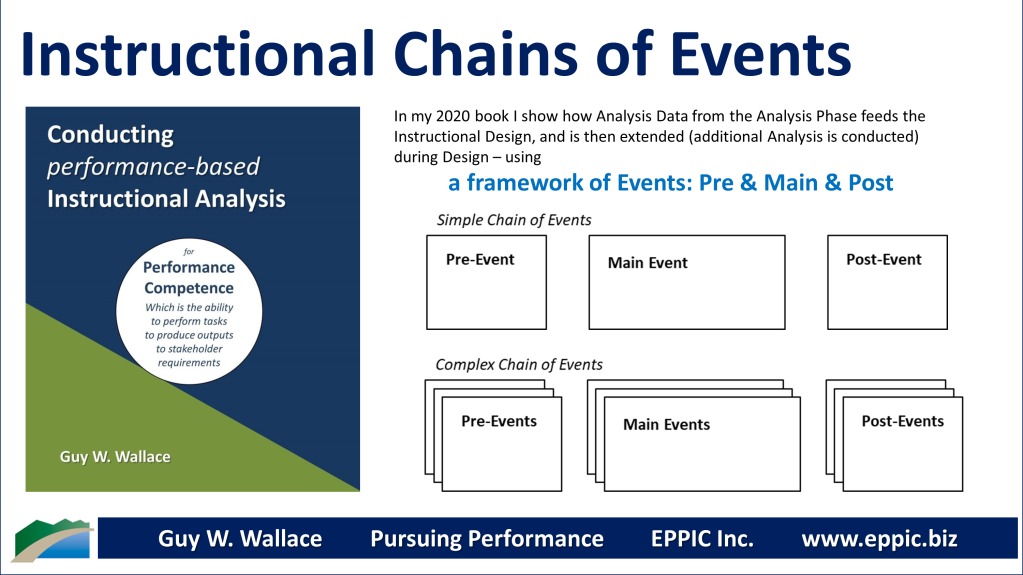
The Pre-Event … sets the Learner/Performer up prior to participating in the Main Event. There may be pre-readings or pre-viewings (videos) or pre-listenings (audio podcasts), pre-activities (such as interviewing the supervisor and/or peers) and/or data gathering preparations and/or observations – all unique to the goals and design of the Main Event.
In a “flipped classroom” approach – this is what gets flipped out in front of the main event – so to speak.
The Main Event … conducts the Instruction by design. This is core. And bookended.
The Post-Event … provides for follow-up to help ensure Transfer, and providing “spaced learning” for reinforcing knowledge and skills to combat the Forgetting Curve should the job itself not adequate provide reinforcements and corrective & reinforcing feedback (which is sometimes the case), and Applications guidance back-on-the-job, plus perhaps additional readings/viewings/listenings, Self-Testing/Assessments, Practice Application Exercises, etc., etc.
Whatever it takes given the Performance Context to help ensure the Entire Investment isn’t a Total Waste (which is sometimes the case).
I Dislike Instructional One-Offs
As I’ve written before (here in 2009, and in 2011, and in 2017) I dislike Instructional One-Offs – which are more reflective of Learning as an Event than my use of the words Event & Events – IMO.
My ISD methodology-set of CAD – Curriculum Architecture Design – which I created back in 1981 when I was at Motorola and have used and evolved as a consultant since 1982 on 76 client projects – would position an Instructional “Chain of Events” in a series of “Chains of Events” – simple or complex – as portrayed in the next graphic.

The Curriculum Path or Map or Blueprint might look like this real one from 2003…

Or this real one from 1989 (the 3rd update from one originating in 1986)…
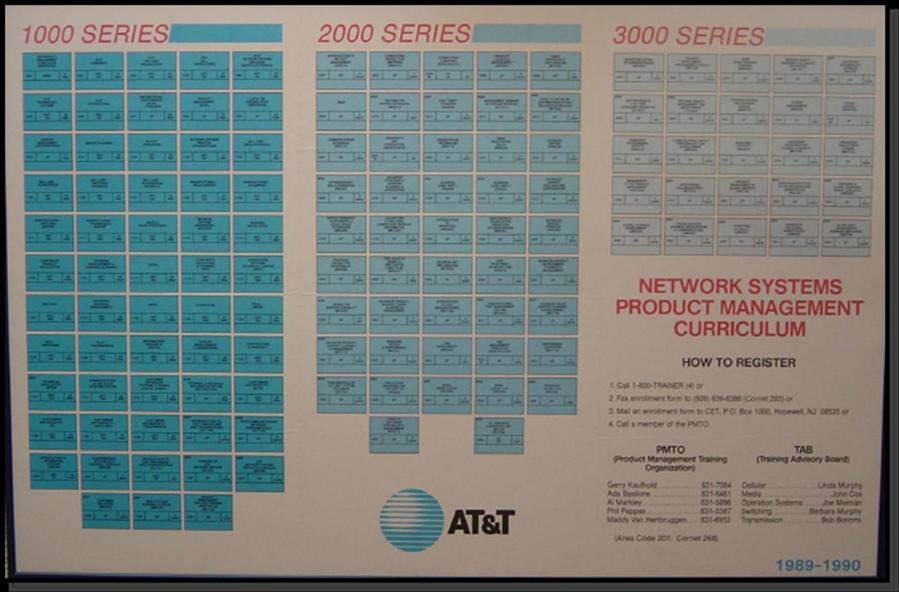
Yep. That’s what the designs look like (kinda) when you peek at the pages under the artistic rendering, so to speak.
I usually don’t include the following “Bookends” on a CAD’s T&D Path – although I might have talked about it every time I got together with my clients for Formal Gate Review Meetings after each Phase of a CAD Project and when kicking-off an MCD effort.
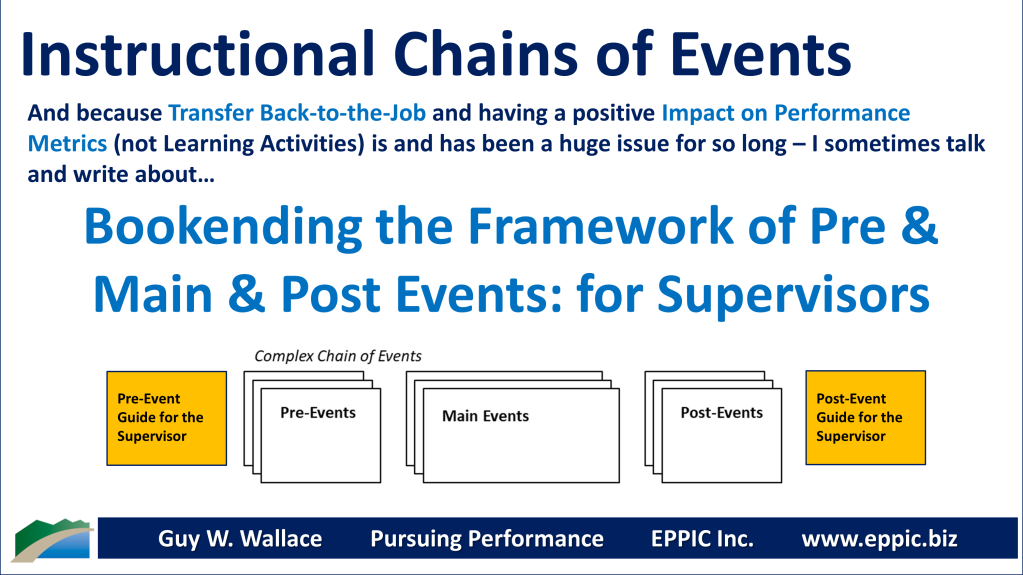
CAD
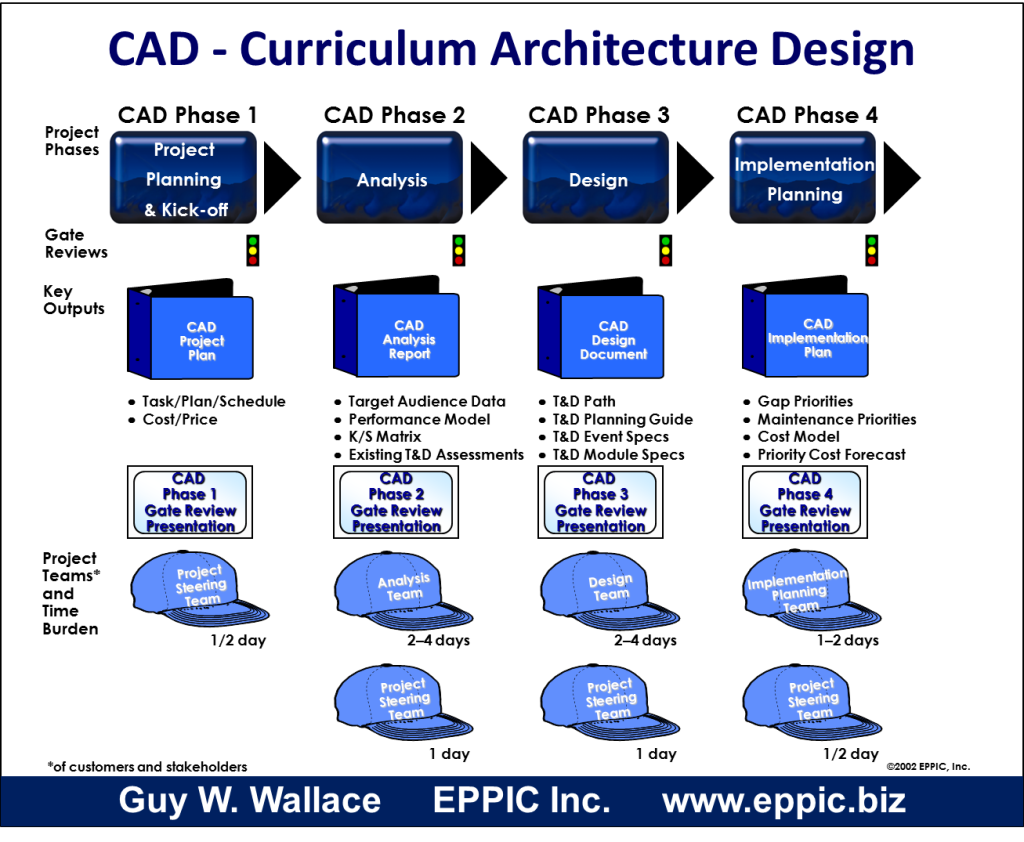
MCD
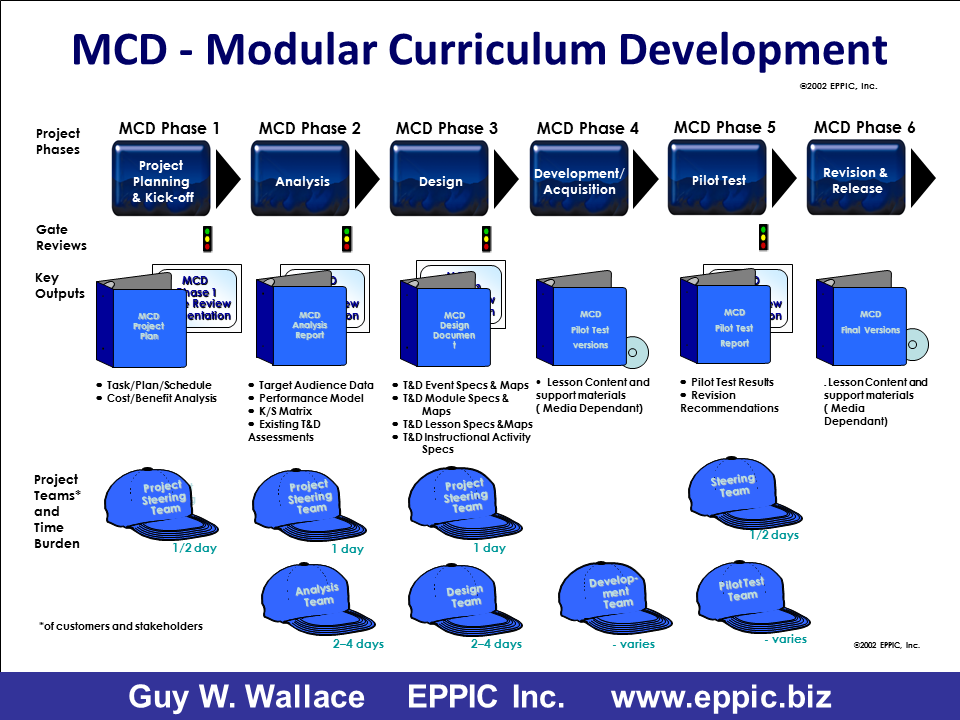
Additional Books & Resources
Conducting performance-based Instructional Analysis: Analysis Should Occur in Every Phase of an Instructional Systems Design & Development Effort Targeted at High Stakes Performance – published Nov 2020.
See it at Amazon: https://amzn.to/36swZ8f
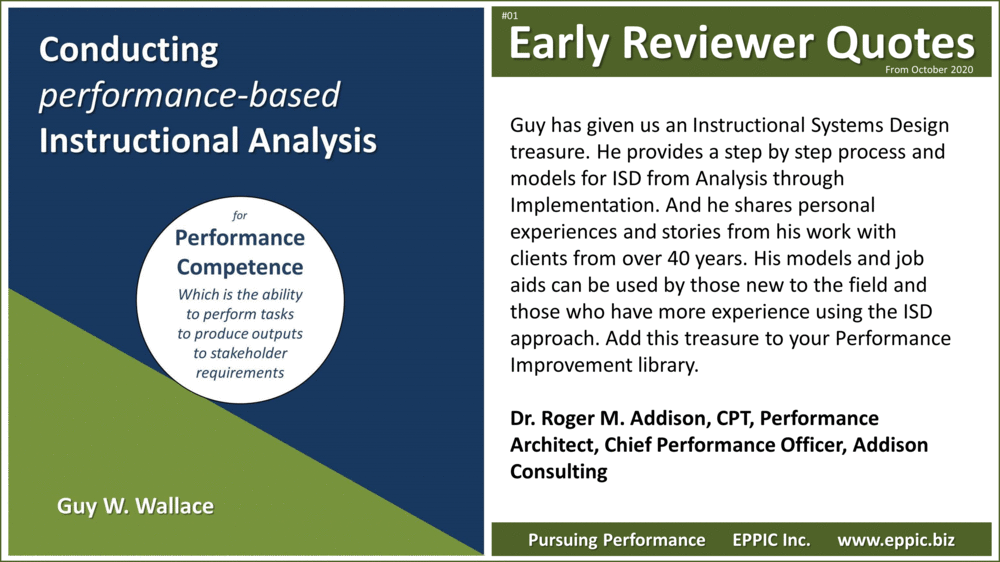
And these are the books of my 2011 Six-Pack.

See all of my books here at Amazon on my Author’s Page: https://www.amazon.com/-/e/B08JQC4C4V
And search for videos, audio podcasts, articles and blog posts on this website – using the search function – or after dropping down into the rabbit-hole under the Resource Tab!
###

You must be logged in to post a comment.